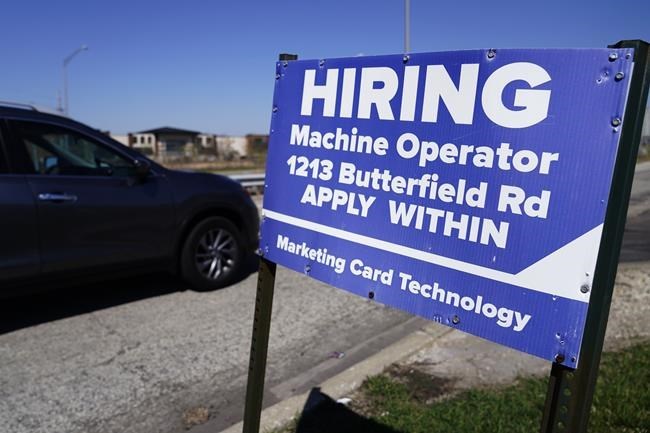Applications for unemployment benefits fell significantly last week after claims appeared to stabilize at modestly elevated levels in recent weeks.
U.S. applications for jobless claims fell by 26,000 to 239,000 for the week ending June 24, the Labor Department reported Thursday. Economists were expecting the elevated claims numbers to continue above 260,000, where they had settled the past three weeks.
“We have no specific explanation for this sudden dip, after three straight weeks in a narrow range from 262K to 265K, but observations for individual weeks always have to be viewed with skepticism, especially when they move against the established trend in claims and other data,” said analysts with Contingent Macro Research in a note to clients Thursday.
The four-week moving average of claims, which evens out some of the weekly fluctuations, rose by 1,500 to 257,500.
Jobless claims applications are seen as representative of the number of layoffs in a given week.
Jobless claims in the previous three weeks had pushed closer to 300,000 after mostly being in the high 100,000 to low 200,000 range since the fall of 2021. Even so, that increase may not have been enough for Fed officials, who have said that the unemployment rate needs to rise well past 4% to bring inflation down.
Also Thursday, the government said the from January through March, much higher than the previous estimate of 1.3%. That, combined with the still-strong labor market, likely means that Fed officials will go through with another rate hike or two before the end of the year as its battle against inflation continues.
The U.S. economy has added jobs at a furious pace since more than 20 million jobs vanished when the COVID-19 pandemic hit in the spring of 2020. Americans have enjoyed unusual job security as companies have been reluctant to shed staff in a worker-friendly labor environment.
U.S. employers added a surprising 339,000 jobs last month, well above expectations, painting a mostly encouraging picture of the job market, even as the unemployment rate rose to 3.7%. In April, employers posted 10.1 million job openings, up from 9.7 million in March and the most since January. Economists had expected vacancies to decline.
Aside from a few sectors, the U.S. economy has been been resilient in the face of the Federal Reserve’s aggressive rate-hiking campaign in its effort to extinguish persistent inflation not seen since the early 1980s. The rate hikes have slowly helped to suppress inflation, though perhaps not as quickly as the Fed had hoped.
Earlier this month, Fed officials chose not to increase the central bank’s benchmark borrowing rate for the first time in 15 months, though some said they expect to add another half-point to rates by the end of the year.
There have been a number high-profile layoffs recently, mostly in the technology sector, where many companies say they hired too aggressively during the pandemic.
IBM, Microsoft, Salesforce, Twitter, Lyft, LinkedIn, Spotify and DoorDash have all announced layoffs in recent months. Amazon and Facebook parent Meta have each announced two sets of job cuts since November.
Outside the tech sector, McDonald’s, Morgan Stanley and 3M have also recently announced layoffs.
The manufacturing sector has been contracting and the real estate sector has suffered because of higher interest rates. Three bank failures also have been blamed in part on higher interest rates.
Overall, 1.74 million people were collecting unemployment benefits the week that ended June 17, 19,000 fewer than the previous week.
Matt Ott, The Associated Press




